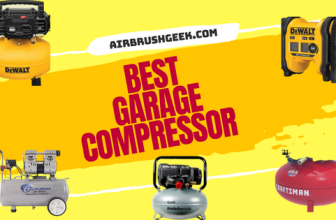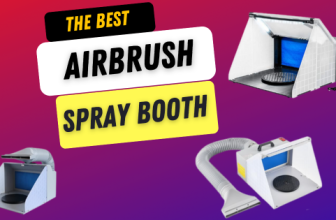Is 3d printing safe indoors? Indoor 3D Printing Safety Tips

Are you a 3D printing enthusiast who loves experimenting with new designs and bringing your creations to life at home? Ever wonder is 3D printing safe indoors? Well, then this blog post is just for you! Get insights on potential risks and safety measures in our in-depth guide. Prioritize a secure 3D printing environment. Learn more now!”Today, we’re diving into the important topic of indoor 3D printing safety. As much fun as it is to see your ideas materialize right in front of your eyes, it’s crucial to ensure a safe printing environment. So, join me as we explore some valuable tips to keep you and your surroundings protected while enjoying the wonders of 3D printing right at home. Let’s get started, shall we?
Exploring the Safety of Indoor 3D Printing
Understanding the Hazards of 3D Printing
3D printing is an innovative technology that has revolutionized various industries, allowing for the creation of complex objects with unprecedented ease. However, as with any technology, it’s important to be aware of the potential hazards that may arise. In this blog section, we will explore some of the hazards associated with 3D printing, including emissions, heat, and electrical safety.
Emissions
One significant concern when it comes to 3D printing is the release of potentially harmful emissions. During the printing process, the melting and solidification of filaments or resin can produce volatile organic compounds (VOCs) and ultrafine particles (UFPs). These emissions can pose health risks if inhaled or exposed to for extended periods. Some of the emissions may include:
- Styrene: Commonly found in the resins used in SLA or DLP printers, styrene is a known respiratory irritant and can potentially cause long-term health issues.
- Acrylonitrile butadiene styrene (ABS): ABS filaments commonly used in FDM/FFF 3D printers can release toxic fumes when heated, leading to headaches, dizziness, and respiratory irritation.
- PLA (Polylactic acid): While PLA is generally considered safe, certain additives can release harmful fumes when exposed to high temperatures.
To minimize the risks associated with emissions, it is advisable to:
- Operate 3D printers in well-ventilated areas, such as with the use of fume extraction systems.
- Utilize 3D printer models or brands that prioritize low-emission materials and processes, such as [Brand X’s Eco-Friendly 3D Printer].
Check this study that quantify emissions of ultrafine particles (UFPs) and speciated volatile organic compounds (VOCs) from five commercially available filament extrusion desktop
3D printers utilizing up to nine different filaments by controlled experiments in a test
chamber.
Heat
Heat management is another crucial aspect of 3D printing safety. During the printing process, the extruder and build platform can reach high temperatures, posing risks of burns or fire hazards. This is especially true for printers that utilize heated beds or enclosed printing chambers. Here are some safety measures to consider:
- Ensure that the 3D printer is placed on a stable surface away from flammable objects.
- Implement thermal protection mechanisms, such as auto-shutoff features, to prevent overheating and mitigate fire risks.
- Choose 3D printers that come with quality-built components and safety certifications, like [Brand Y’s Fire-Safe 3D Printer].
Electrical Safety
3D printers require an electrical power source to operate, making electrical safety a crucial consideration. Here are some key points to keep in mind:
- Always use a grounded electrical outlet and avoid using extension cords or power strips.
- Regularly inspect the printer’s power cables for signs of damage and replace them if necessary.
- Look for 3D printers that comply with industry safety standards, such as [Brand Z’s UL-Certified 3D Printer].
Choosing the Right Printer
In the world of 3D printing, selecting the right printer for your needs can be a daunting task. With so many options available in the market, it’s important to consider not only the features and capabilities of the printer but also its safety standards. In this blog post, we will guide you on how to choose a 3D printer that meets safety requirements and offers the necessary safety features.
Understanding Safety Standards and Certifications
When it comes to 3D printers, safety should always be a top priority. Understanding the safety standards and certifications will help you make an informed decision. Here are some key safety standards to consider:
- UL 2904: This is a safety standard specifically designed for 3D printers. It evaluates the emissions of 3D printers, ensuring that they are within safe limits.
- CE Marking: The CE marking is a mandatory conformity mark for products sold in the European Economic Area. It indicates that the product complies with the essential health and safety requirements set by the European Union.
Ensuring that your chosen printer meets these safety standards will give you peace of mind knowing that it has undergone rigorous testing to ensure user safety.
Key Safety Features to Look For
So, is 3D printing safe indoors? Apart from adhering to safety standards, there are certain safety features that a good 3D printer should have. These features enhance user safety and prevent accidents. Consider the following when making your decision:
- Enclosed Build Chamber: An enclosed build chamber is a crucial safety feature to look for. It prevents users from touching hot components or being exposed to potentially harmful emissions. Brands like Prusa Research and Ultimaker offer printers with enclosed build chambers.
- Automatic Filament Runout Sensors: These sensors detect when the filament has run out and pause the printing process. This prevents the printer from continuing to operate without material, reducing the risk of damage and fire hazards. Creality Ender series printers incorporate automatic filament runout sensors.
- Thermal Runaway Protection: This feature ensures that the printer’s temperature remains under control during operation. It prevents overheating and reduces the risk of fire. Original Prusa i3 MK3S+ and Anycubic Photon Mono X are examples of printers that come with thermal runaway protection.
- Built-in Fire Detection and Suppression: Some advanced 3D printers come with built-in fire detection systems that can detect and extinguish fires. For instance, Formlabs Form 3 printer uses a smart cartridge system that detects potential fires and automatically shuts down the printer.
Comparison Table: Top 3D Printers with Safety Features
To help you make a quick comparison, we have prepared a table highlighting some popular 3D printers and their safety features:
| Printer Model | Enclosed Build Chamber | Filament Runout Sensor | Thermal Runaway Protection | Fire Detection and Suppression |
|---|---|---|---|---|
| Prusa i3 MK3S+ | Yes | No | Yes | No |
| Ultimaker 3 | Yes | Yes | Yes | No |
| Creality Ender 3 Pro | No | Yes | No | No |
| Formlabs Form 3 | No | Yes | Yes | Yes |
Making an Informed Decision
When choosing a 3D printer, it’s crucial to prioritize safety. Consider the safety standards, certifications, and features offered by different printers. By selecting a printer that adheres to safety regulations and includes essential safety features, you can ensure a safer printing experience while achieving high-quality results.
Remember, investing in a printer that meets safety standards will not only protect you and your workspace but also guarantee the longevity and reliability of your 3D printing journey.
Setting Up Your Workspace
Creating a well-organized and safe printing workspace is essential for maximizing productivity and minimizing risks. Whether you are a professional printer or an enthusiastic hobbyist, taking the time to set up your indoor workspace properly can make a world of difference. In this blog section, we’ll provide you with practical advice and tips to help you create an efficient and safe printing environment.
Clearing the Clutter
Before you start setting up your workspace, it’s important to declutter and organize the area. A clutter-free environment not only improves focus but also reduces the risk of accidents. Here are some steps to get you started:
- Remove unnecessary items: Begin by clearing the space of any items that are not directly related to printing. This includes old papers, coffee cups, and unrelated equipment.
- Utilize storage solutions: Invest in storage solutions such as shelving units, drawers, or containers to keep your tools and supplies neatly organized. This ensures everything is within reach and minimizes the chances of tripping or stumbling over items.
- Labeling: Use labels to mark different storage areas, making it easier to find specific tools or materials when needed.
Ergonomics, Comfort, and Safety
Working in a comfortable and ergonomic environment not only enhances productivity but also reduces the risk of physical strain and discomfort. Here’s what you can do to create a workspace that puts your physical well-being first:
- Desk and chair setup: Ensure that your desk and chair are at the appropriate height and provide adequate support. Consider investing in an adjustable chair and an ergonomic desk that allows you to adjust the height to match your needs.
- Lighting: Good lighting is crucial to prevent eye strain and fatigue. Position your desk in a well-lit area and consider using task lighting to focus on specific areas, such as your printing station.
- Ventilation: Printing can release fumes and odors, so make sure your workspace is well-ventilated. Open windows whenever possible or invest in an air purifier to keep the air clean and fresh.
- Cable management: Keep cables organized and out of the way to prevent tripping hazards. Consider using cable management solutions, such as cable clips or cable sleeves, to keep cords neatly arranged.
Printer Placement and Maintenance
Deciding where to place your printer and implementing good maintenance practices are vital for efficient printing and prolonging the lifespan of your equipment. Consider the following:
- Location: Place your printer on a stable surface that is easily accessible. Ensure there is enough space around it for ventilation and proper maintenance.
- Paper storage: Store your printing paper in a dry and dust-free location. Consider investing in a paper organizer or shelf to keep different paper types neatly separated.
- Cleaning supplies: Keep cleaning supplies, such as lint-free cloths and printer-safe cleaning solutions, nearby for regular maintenance to prevent ink smudges or printhead clogs.
Safe Operating Practices
When it comes to operating a 3D printer, safety should always be a top priority. To ensure a safe working environment and prevent accidents, there are certain practices you should follow. In this blog section, we will outline essential safety practices to help you operate your 3D printer with confidence. Let’s dive in!
Proper Ventilation
To start off, one key safety measure is to ensure proper ventilation in your workspace. When 3D printers operate, they release fumes and potentially harmful particles into the air. These emissions come from the heated filament and any materials used in the printing process. To minimize any risks, consider the following:
- Location: Place your 3D printer in a well-ventilated area, away from occupied spaces. This could be a dedicated room or a space with good airflow.
- Air Extraction: Install an air extraction system or use a fume extractor near the printer to remove harmful fumes and particles from the air. Several brands, such as the Airwolf AXIOM, offer built-in air filtration systems for added convenience and safety.
- Enclosure Ventilation: If your 3D printer has an enclosure, ensure it has proper ventilation to avoid buildup of fumes and heat. Look for models like the Creality Ender 3 Pro that have ventilation systems integrated into their enclosures.
Regular Maintenance
Another crucial aspect of safe 3D printer operation is regular maintenance. Proper maintenance not only extends the lifespan of your printer but also helps prevent malfunctions and reduces the risk of accidents. Here are some key maintenance practices to consider:
- Cleaning: Clean your printer regularly, removing any dust or debris that may accumulate on the printer bed or inside the nozzle. This helps maintain print quality and prevents obstructions.
- Filament Inspection: Before loading filament into your printer, inspect it for any signs of damage or moisture. Using damaged or wet filament can lead to clogs or poor print quality. Brands like Prusa offer dry-box filaments with moisture indicators to ensure optimal filament quality.
- Belt Tension: Periodically check the tension of the belts on your 3D printer. Loose belts can affect print accuracy and may cause potential issues during operation. Tightening the belts as needed will help ensure smooth and precise movements.
- Lubrication: Properly lubricate the moving parts of your 3D printer, such as rods and bearings, according to the manufacturer’s recommendations. This reduces friction and ensures smooth operation, preventing unnecessary wear and tear.
Summary
By following these safe operating practices, you can minimize potential risks when using a 3D printer. Remember to prioritize proper ventilation, considering the use of air extraction systems and well-ventilated spaces. Additionally, regular maintenance is essential for the longevity and safe operation of your printer. Incorporating these practices into your routine will help you enjoy hassle-free printing and ensure your safety in the process. Stay safe and happy printing!
For more detailed instructions and safety guidelines, consult your 3D printer’s user manual or reach out to the manufacturer’s customer support.
Final Thoughts on Staying Safe While Using an Indoor 3D Printer
Can we say that 3 D printing is safe indoors?By being aware of the potential hazards associated with indoor 3D printing and taking the necessary precautions, such as selecting a safe printer, creating a suitable workspace, and following safe operating practices, you can ensure a safe and enjoyable 3D printing experience. It is important to prioritize safety to minimize any potential risks and fully enjoy the benefits that 3D printing has to offer.










 Amazon.com
Amazon.com










Great article! The tips provided are very helpful and informative. It’s important to prioritize safety when using indoor 3D printing.
I appreciate the emphasis on proper ventilation and fire safety measures. These precautions can prevent accidents and protect both users and the environment.
I would have liked to see some information on handling and disposal of 3D printing waste. It’s important to address the environmental impact as well. Overall, a well-written article!